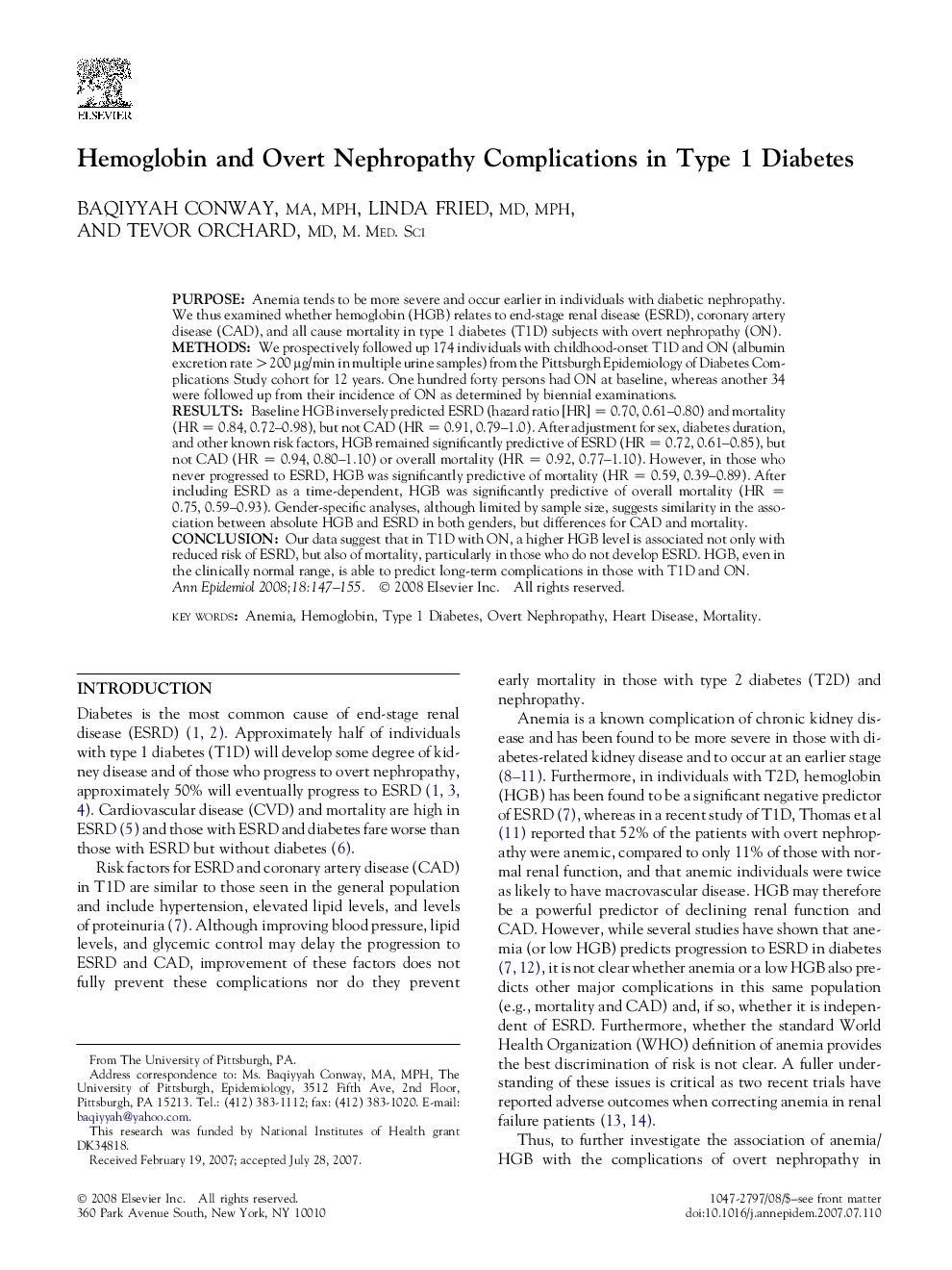| Article ID | Journal | Published Year | Pages | File Type |
|---|---|---|---|---|
| 3445618 | Annals of Epidemiology | 2008 | 9 Pages |
PurposeAnemia tends to be more severe and occur earlier in individuals with diabetic nephropathy. We thus examined whether hemoglobin (HGB) relates to end-stage renal disease (ESRD), coronary artery disease (CAD), and all cause mortality in type 1 diabetes (T1D) subjects with overt nephropathy (ON).MethodsWe prospectively followed up 174 individuals with childhood-onset T1D and ON (albumin excretion rate >200 μg/min in multiple urine samples) from the Pittsburgh Epidemiology of Diabetes Complications Study cohort for 12 years. One hundred forty persons had ON at baseline, whereas another 34 were followed up from their incidence of ON as determined by biennial examinations.ResultsBaseline HGB inversely predicted ESRD (hazard ratio [HR] = 0.70, 0.61–0.80) and mortality (HR = 0.84, 0.72–0.98), but not CAD (HR = 0.91, 0.79–1.0). After adjustment for sex, diabetes duration, and other known risk factors, HGB remained significantly predictive of ESRD (HR = 0.72, 0.61–0.85), but not CAD (HR = 0.94, 0.80–1.10) or overall mortality (HR = 0.92, 0.77–1.10). However, in those who never progressed to ESRD, HGB was significantly predictive of mortality (HR = 0.59, 0.39–0.89). After including ESRD as a time-dependent, HGB was significantly predictive of overall mortality (HR = 0.75, 0.59–0.93). Gender-specific analyses, although limited by sample size, suggests similarity in the association between absolute HGB and ESRD in both genders, but differences for CAD and mortality.ConclusionOur data suggest that in T1D with ON, a higher HGB level is associated not only with reduced risk of ESRD, but also of mortality, particularly in those who do not develop ESRD. HGB, even in the clinically normal range, is able to predict long-term complications in those with T1D and ON.
